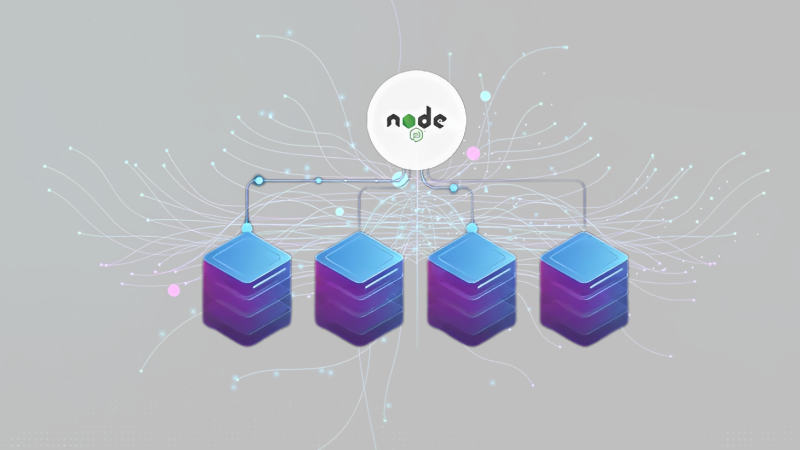INTRODUCTION
Node.js released each new version of Node.js, which contains improvements and optimizations, as well as new features that could help NodeJS developers get better performance and experience. This blog post takes a closer look at what has changed in this version in order to provide developers with reasons to upgrade to the later version.
1. Versioning and Support Lifecycle
Before addressing the technology shifts, we would like to emphasise that Node.js has an odd-numbered version, for example, Node.js 21, that gets only one year of support. There are Long-Term Support (LTS) releases every other number, residing such as Node.js 20. This in itself means that Node.js 21 is a short term release aimed at developers eager to try out new features and nurse bug fixes and on the other hand, Node.js 20 can be considered being a long term release for production.
2. V8 JavaScript Engine Upgrade
Another interesting change in Node.js 21 is the update to the V8 engine from Node.js 20 with V8 11.3 to V8 11.8 in Node.js 21.
This upgrade brings several performance improvements and new JavaScript features:
- Array Grouping: Handling collections of data has been made easier by the use of R7 EH groupBy of Object and Map grouping of array items.
- Improved ArrayBuffer Handling: Node.js 21 has added ‘ArrayBuffer.prototype.transfer’ to provide a seamless way of transferring the native `ArrayBuffer` ownership between the buffers, giving enhanced control of the memory, and efficient handling of the buffers reallocation.
These changes make Node.js 21 more capable to handle structures and more powerful applications than the Node.js 20.
3. Test Runner Enhancements
Another cool thing that Node.js 20 brought to the users is a native test runner being important for those, who work with automated tests.
In Node.js 21, this feature has been further refined with new capabilities:
- Glob Pattern Matching: Glob expressions can now be used to specify test file patterns more efficiently so as to improve the test runner’s flexibility for developers.
- Better Performance: Besides these usability enhancements, there are also performance enhancements that has been implemented to make testing run faster and with more stability in contrast to Node.js 20.
These enhancements make Node.js 21 a better option for those using it for testing automation as you have perfect control of the test’s run time, and they are quicker.
4. Native ES Module Support
Updating to Node.js 20, ES modules received stabilisation and, even though they are a viable solution to use on websites and applications, proper usage of ES modules with CM is still accompanied by peculiarities and restrictions.
Node.js 21 takes a step further by simplifying module usage:
- Default Module Type: In Node.js 21, a new startup flag is added `–experimental-default-type=module`, helping make even modules inherently use ES by setting this as a default if there is no `package.json` or declared/started module type.
- Removal of Confusing Hooks: The previously rather strange`globalPreload` hook has been substituted with much more straightforward APIs, such as `register` and `initialise` in order to control the loading of modules.
This change now allows individuals that develop in Node.js 21 to utilise the more evolved JavaScript modular standard.
5. HTTP Parsing and Security
Node.js 21 enforces stricter security measures by introducing updates to its HTTP parser:
- Strict Mode in HTTP Parsing: As you know, the latest Node.js release 21 comes with the new version of llhttp v9.1.2 that enforces strictly correct HTTP parsing, including improper at headers and chunks by correctly finishing them with `\r\n`. This results into the development of higher and more secure communication standards.
- Optional Insecure Mode: As a compromise, the `–insecure-http-parser` flag is still possible to use, to retain the possibilities for older applications to execute scripts without immediate code changes.
However, Node.js 20 does not have all these strict HTTP parsing enhancements hence making Node.js 21 to be more secure for handling HTTP traffic.
6. File System Improvements
Both Node.js 20 and 21 offer robust file system interaction, but Node.js 21 includes a few key refinements:
- Flush Option for `fs.writeFile()`: The latest Node.js 21 brings a new `flush` flag to the `fs.writeFile()` interface, meaning that data is written synchronously to disc and can be accessed afterward, so that there is no chance of losing or compromising it. Surprisingly, Node.js 20 does not include this safety feature, which is why opting for Node.js 21 is adviseable for numerically intensive file operations.
7. Performance Gains
Performance optimization is a critical factor in each Node.js release, and Node.js 21 brings notable speedups:
- Streams API Optimization: By optimization of stream callbacks and cut unnecessary cheques Node.js 21 can provide up to 10% performance gain while working with streams against Node.js 20 сутки.
- Improved Chunked Response Handling: Node.js 21 makes improvements for client-server communication by not splitting chunked responses that otherwise would add overhead.
All these optimizations make Node.js 21 a better option for applications dealing with high throughput as well as real time streaming.
8. NPM Update
Node.js 21 has npm 10.2.0 and Node.js 20 has npm 9. Node.js 21’s npm upgrade introduces:
- Software Bill of Materials (SBOM): Finally, to facilitate these activities, a new command `sbom` is developed that empowers the developers to obtain an SBOM for their projects which will enhance the dependency management and security auditing of their projects.
- Performance Enhancements: npm 10 is faster and more secure, expanding upon the benefits of using Node.js 21 for large-scale production 21 even more.
Unfortunately, npm 9 in Node.js 20 does not have these advanced features and notably, the SBOM generation which is so mandatory for today and future compliance.
9. Miscellaneous Updates
Node.js 21 also extends a partial support for `navigator` object which provides access to system hardware concurrency through `navigator.hardwareConcurrency useful` in multi-threaded apps. Furthermore, node fs new features, updates in file system operations and various other bugs for improving node js 21 over node js 20 is properly detailed.
Conclusion:
There are many improvements in Node.js 21 over Node.js 20 such as better landscape modules, updated testing features, and so on, better web HTTP parsing, doing stricter parsing, introducing better performance speed in core API’s, and many more. It is not the LTS version which means it should not be widely used in production environments with a need to maintain stability However for those who want to try the newest features or improve the NodeJS development Services process Node.js 21 will be a good choice.
FAQ
1. What is the main difference between Node.js 20 and 21?
Among the various fresh features and efficiency optimizations Node.js 21 brings an updated V8 engine, better ES module support, more testing tools, and tighter HTTP parsing are Node.js 20 gets LTS support and emphasizes long-term stability more broadly.
2. Is Node.js 21 backward-compatible with Node.js 20?
Although Node.js 21 is mostly backward-compatible, some changes such as more rigorous HTTP parsing may call for code modifications in applications running less rigid protocols.
3. Which version is better for production use, Node.js 20 or 21?
Node.js 20’s Long-Term Support (LTS), which offers stability and prolonged support, makes it more fit for production. Though it has a shorter support cycle, Node.js 21 is preferable for testing the most recent features and optimisations.
4. What performance improvements does Node.js 21 offer over Node.js 20?
Particularly in the Streams API and chunked response processing, Node.js 21 offers notable speed gains that swiftly handle real-time data and big applications.
5. Does Node.js 21 come with the latest npm version?
Yes, Node.js 20 comes with npm 9; Node.js 21 delivers with npm 10 with additional functionality like Software Bill of Materials (SBOM) creation.
Read more:



